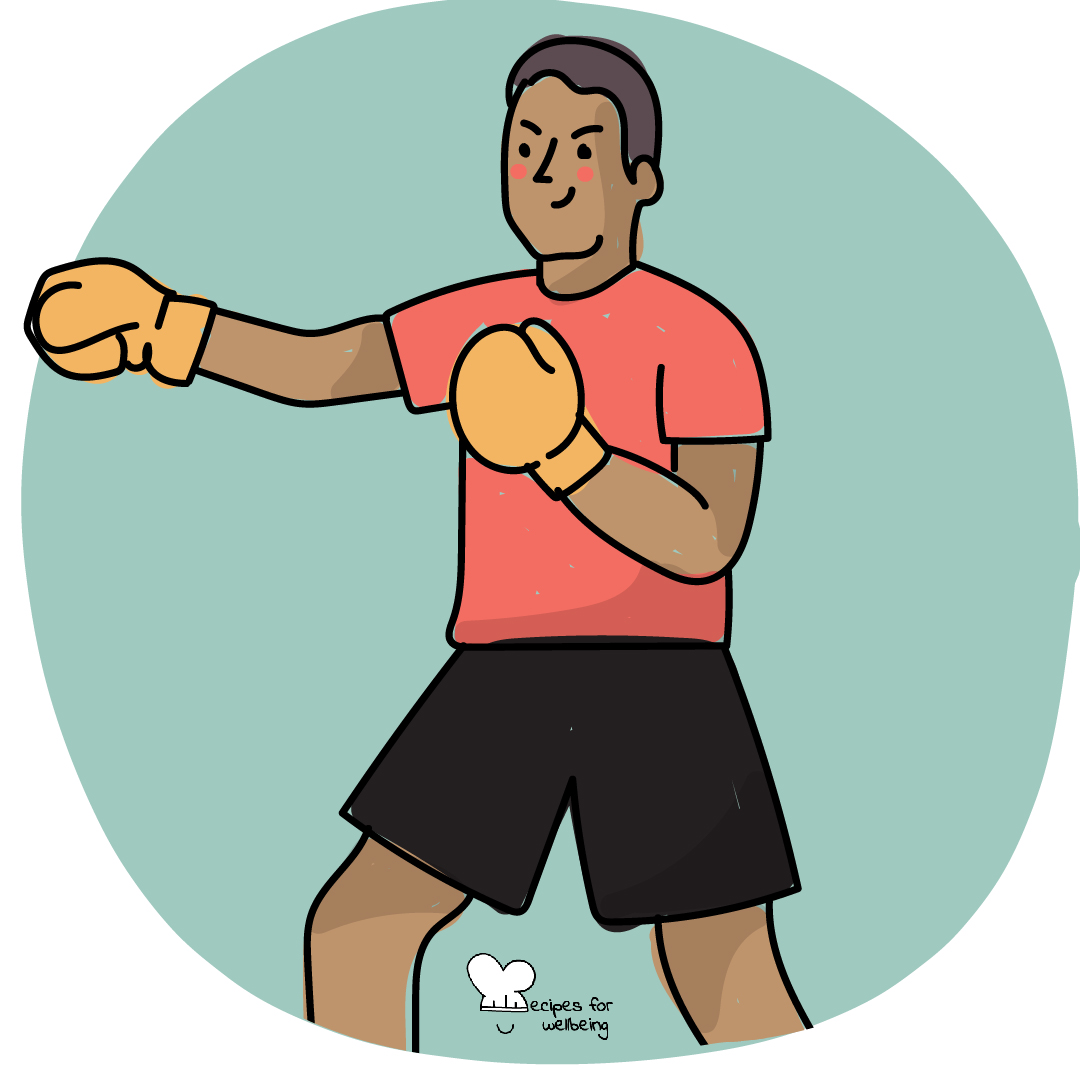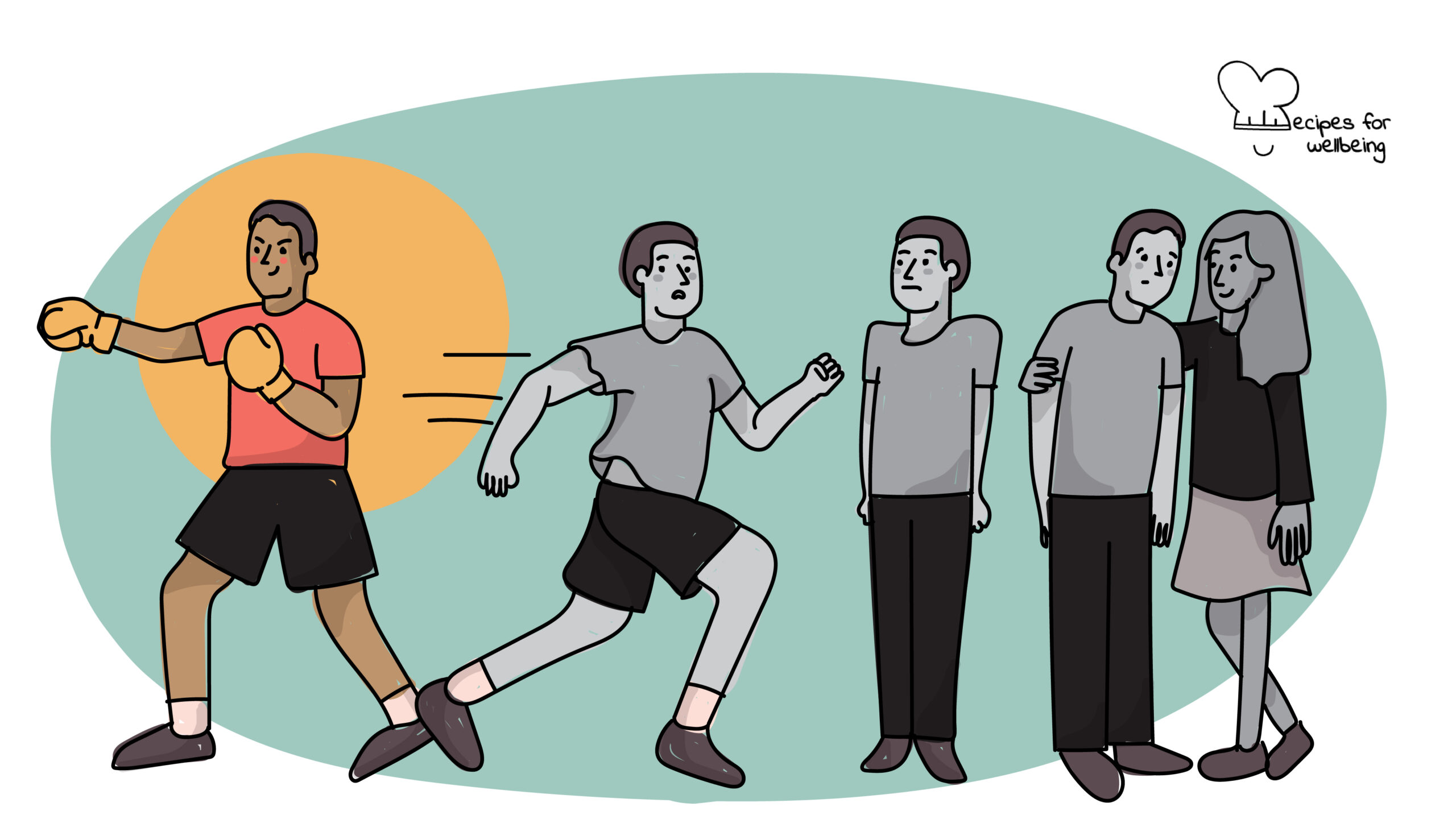
Managing the fight response
Basically, in the fight-or-flight response, the objective is to get away from the source of threat. All of our muscles prepare for this escape by increasing their tension level, our heart rate and respiration increase, and our whole basic metabolic system is flooded with adrenaline. ―Peter A. Levine
👥 Serves: 1 person
🎚 Difficulty: Hard
⏳ Total time: Ongoing
🥣 Ingredients: Self-awareness, self-expression, “Managing the ‘fight’ response: Anger, repression, and self-regulation” Being Well podcast episode (if you’re curious to find out more about it!)
🤓 Wholebeing Domains: Awareness, Discomfortability, Rest
💪 Wholebeing Skills: Adaptability, Agency, Forgiveness, Perspective, Relief, Self-awareness, Self-regulation, Slowing down, Stress management

Managing the fight response
📝 Description
Tips to shift from maladaptive to adaptive fight response.
This recipe is one of four dedicated to the topic of stress responses, looking specifically at the fight response. In a nutshell, a stress response is a way in which you can respond to stress in life. You might be familiar with the first three as the fourth one is newer:
- Fight response: You can fight it.
- Flight response: You can run away from it.
- Freeze: You can play dead like animals do.
- Fawn: You can try to appease the person who is hurting you.
Importantly, you have access to all four responses, but you tend to develop a habit (build early on in life) to focus on one of these responses. Remember that stress responses are adaptive, meaning that they’re here to help you solve problems. However, they can become maladaptive and not serve you well. Are you managing the more adaptive aspects of them or are you falling prey to the more problematic aspects of them?
The following activity has been inspired by a conversation between Forrest Hanson and Dr Rick Hanson on their Being Well podcast (Spotify & YouTube). To explore the other stress responses, check out the following recipes:“Managing the flight response”, “Managing the freeze response”, and “Managing the fawn response”.
👣 Steps
Step 1 – Understanding the fight response
What comes to mind when you think about the ‘fight’ response? Most people connect it with feelings of anger, rage, resentment. Dr Hanson reminds us that anger, biologically, serves various adaptive functions:
- It highlights a problem, which can be useful when facing injustice.
- It is very energising so there is energy you can work with.
- It tends to be organising which can help you when feeling disassociated.
What does the flight response look like? If you are standing up for yourself, holding a boundary, protecting somebody else, you’re activating the fight response. The fight response is deeply grounded in an underlying sense of capability and agency, which speaks of your resourcefulness. However, the flip side is a sense of perceived superiority, which can be dangerous.
Also, anger is socially situated, meaning that some people are allowed to express their anger whereas others are not – and this ability is linked to the perception of power. In fact, the fight response has something problematic that the other three responses don’t have: repression. Because of socially constructed norms, repression tends to be more likely in women (whereas men tend to struggle more with unregulated anger).
Step 2 – How to deal with repressed anger?
It’s important to first and foremost acknowledge that unexpressed anger exists in you. It all starts with building self-awareness. Ask yourself: What are the deeper emotions that lie underneath how you are feeling? From there, you can build your confidence in expressing your emotions, reclaiming your right to experience anger and communicate it to other people.
Step 3 – Tips to manage the fight response
Dr Hanson highlights that anger tends to happen in two stages:
- Priming: The stuff that builds up over time.
- Trigger: The spark that lights all of the matches in the room.
Ask yourself: Do you have a tendency to accumulate matches which light up at the tiniest of sparks? Does the other person seem surprised by your ‘over-reaction’ which only makes you feel more upset? In these situations, it is helpful to have access to strategies that help you slow down, e.g. taking a step back, creating some space, buying some time… and help you take a wider view. Can you see things through a slightly different lens? Check out our recipes “STOPP framework” and “Cycle of emotions” if you struggle to slow down in the heat of the moment.
Ultimately, it’s about self-expression; you can express your anger and it’s important for you to feel like that you can do it if you need to. Having this choice often helps diffuse the problematic aspects of the flight response. What are you trying to pursue by accessing this energy? What are you fighting for, rather than against?

